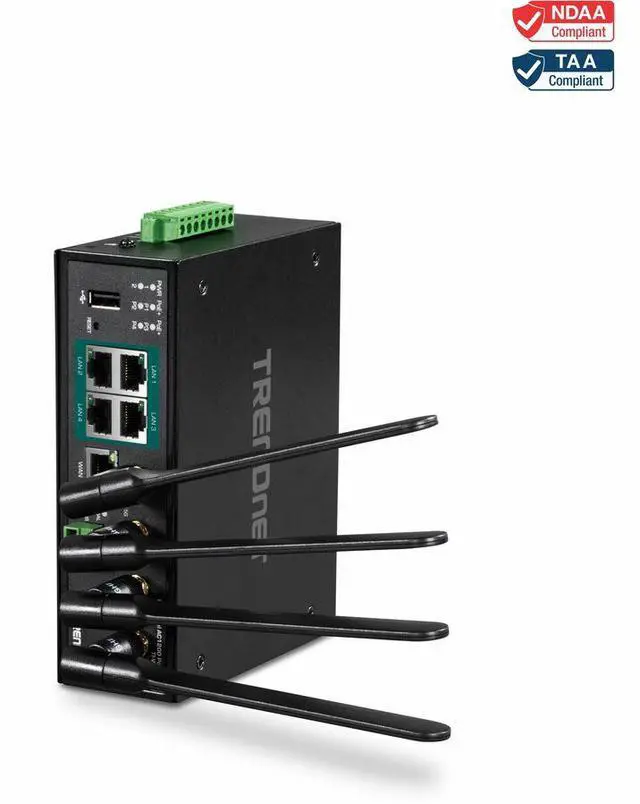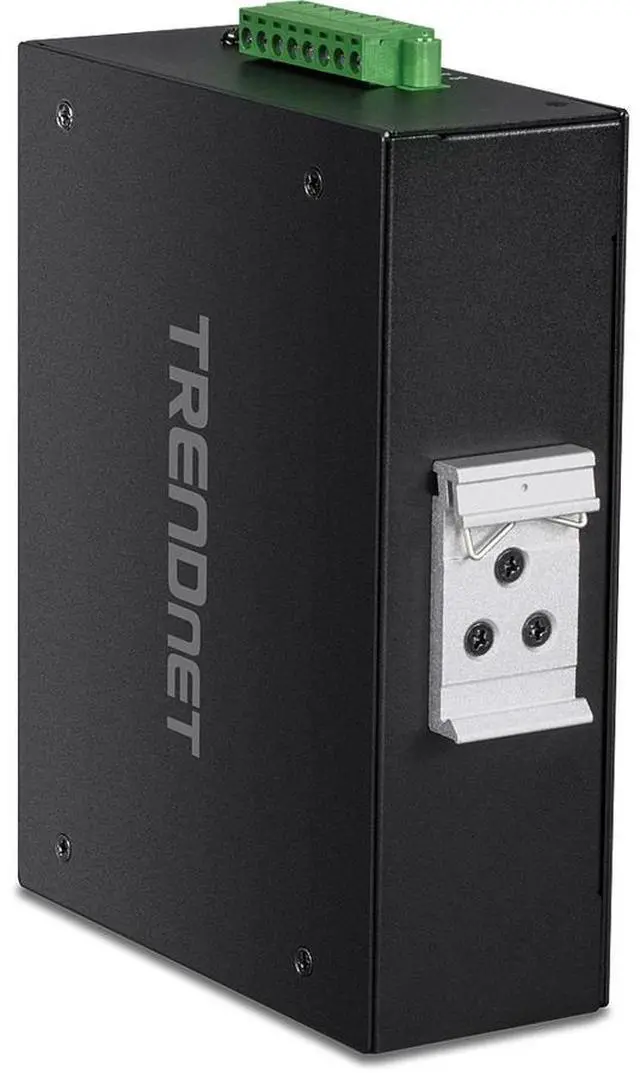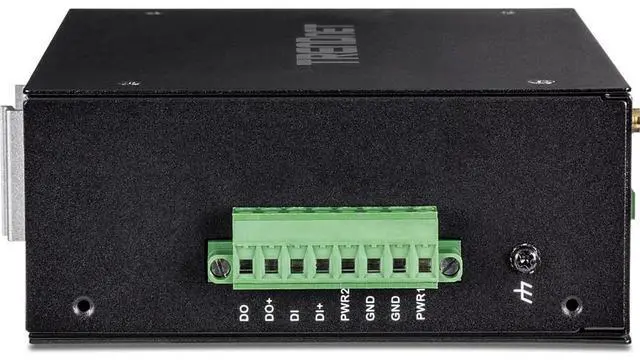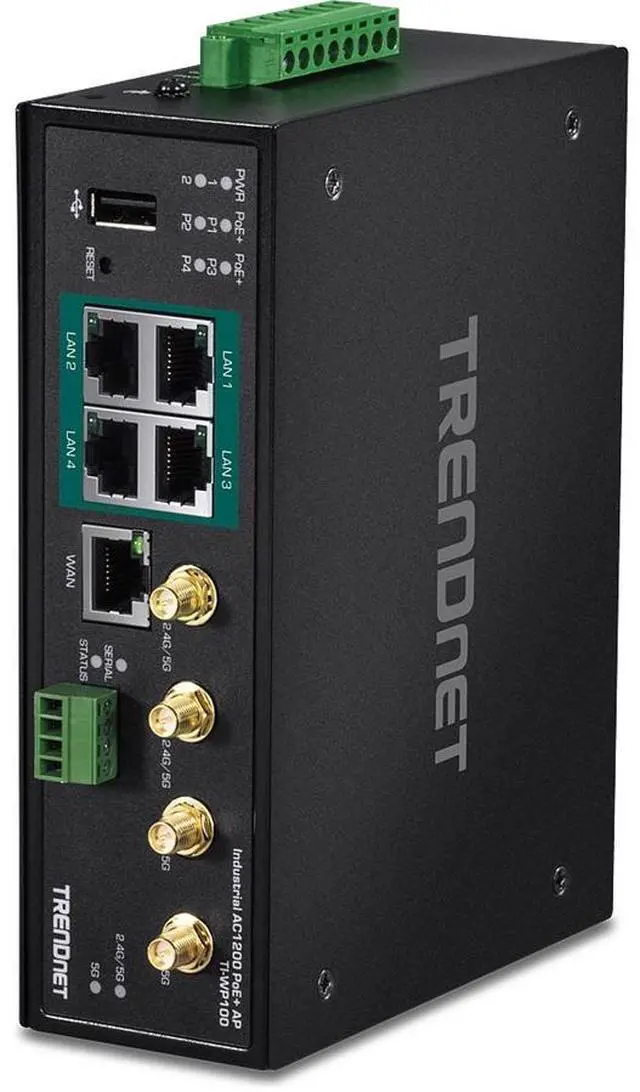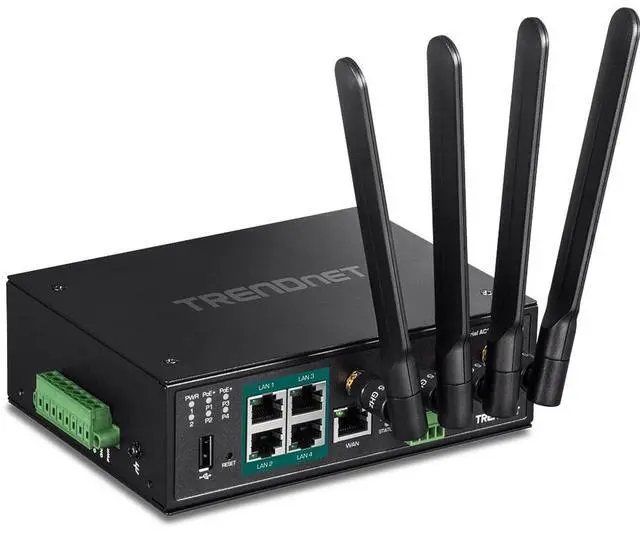TRENDnets Industrial AC1200 Wireless Dual Band Gigabit PoE+ Router, model TI-WP100, features dual-band AC1200 WiFi to
maximize device networking speeds; it is equipped with an 867Mbps Wireless AC network, and a 300Mbps Wireless N network. It
supports dual-WAN hybrid connections (Ethernet for load balancing or fail-over modes, and encrypted Virtual Private Network (VPN)
access for remote users. Four gigabit PoE+ ports enable users to power access points, IP cameras, and other PoE+ devices directly
from the router. Supports both PoE ( 802.3 af) and PoE+ ( 802.3 at) devices with a 120W PoE power budget. The Industrial AC1200
gigabit router is equipped with an IP30 rated metal housing, and designed to operate within a wide temperature range of -30° 70°
C (-22° 158° F) for industrial environments.
TI-WP100
Advanced traffic management controls, troubleshooting, and SNMP monitoring support make this a powerful solution for SMB
networks. This wireless router features advanced managem
